Cutting with scissors is an essential milestone in early child development. Cutting is a complex skill that takes several years to develop. It might be challenging for some children to coordinate scissor movements without ample early childhood opportunities.
As an occupational therapist working with preschoolers, I am keenly aware of the high percentage of kids entering preschool with limited scissor cutting experience. The problem is exposure. While safety concerns around scissors are entirely warranted, there are responsible ways to introduce this activity to children.
Beginning at ages 2 and 3, children are ready to explore cutting with scissors. The first step involves using safety scissors. These scissors are small and easy for little hands to grasp and control. In addition, safety scissors are dull and can only cut paper. They will not cut hair, clothes, or skin.
First, toddlers acquire the necessary skills and then build on these skills to learn advanced parts of the cutting tasks. Positive experience with developmental steps of cutting stages will result in continued interest in future cutting progressions.
It is important to take it slow. If children are expected to complete cutting activities that do not fit their developmental profile, they will become frustrated and disinterested in cutting tasks. For example, we can’t expect a preschooler to cut on a line if he/she doesn’t know how to pick up and hold scissors. Therefore, it is essential to assess the child’s developmental cutting stage, and then provide opportunities for practice at the child’s current level of performance.
Before we dive into the developmental stages of scissor cutting in children, we must talk about the benefits of cultivating proper cutting skills in preschoolers.
Why is cutting with scissors important for child development?
Using scissors in preschool helps develop fine-motor skills. Cutting with scissors requires an opening and closing motion of the hand, which improves finger dexterity and strengthens small muscles of the hand. These skills are fundamental for grasping pencils, writing, manipulating educational materials (i.e., art media, games, small tools/objects), and precision tasks (i.e., building with Legos, fastener manipulation, playing instruments).
Cutting practice gives children a chance to work on bilateral coordination. Bilateral coordination is the ability to use both sides of the body in a controlled and organized manner. In cutting tasks, each hand performs different movements. The assistant hand-holds and maneuvers the paper, while the dominant hand manipulates the scissors to perform the cutting action.
“The mature stage of bilateral hand use, which is the ability to use opposing hand and arm movements for highly differentiated activities such as cutting with scissors, begins to emerge at about 2 ½ years. Patterns from each stage of bilateral hand use are applied and refined through different activities throughout the child’s development.” (Case-Smith 2009).
Hand-eye coordination is another necessary skill that improves during cutting activities. A child’s eyes direct attention to the hands to complete the task. The eyes and hands work together to organize and control successful cutting tasks. Hand-eye coordination is a critical component of skill-acquisition. Most people attribute hand-eye performance to sports, but it is equally essential to academic activities, like handwriting, reading, and more.
Cutting activities also promote focus and attention. Carefully maneuvering scissors, children learn to concentrate for extended amounts of time. The engagement of higher-level brain functions helps kids filter out classroom distractions, leading to the completion of meaningful tasks. Preparing young minds to work on tasks that require prolonged attention and effort, such as cutting, will lead to academic success.
Prerequisite Skills for Success in Cutting with Scissors
Let us assess child’s skills to determine if she/he is ready to learn how to use scissors.
- Open and close motion of the hand. Grasp and release objects voluntarily (i.e., pick-up, hold, and let go of crayon/fork).
- Use hands together in a dominant-assistant manner (i.e., holding a small container and inserting coins into the container, peeling banana).
- Isolate and/or combine the movement of the thumb, index, and middle fingers.
- Coordinate arm, hand, and eye movements.
- Demonstrate awareness, interest, and focus on learning new skills.
When children attain the skill components, as mentioned above, it means they show readiness to begin their scissor cutting exercises.
Developmental Stages for Cutting with Scissors
1 – 2 years old:
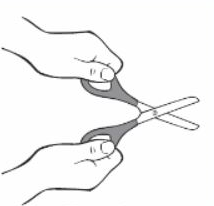
- Holds scissors with the whole hand
- Demonstrates interest in scissors.
- Holds scissors with both hands, and uses both hands to open and close scissor blades.
- Experiments with placing fingers in loops.
2 – 3 years old:
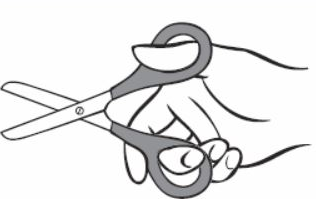
- Opens scissors
- Learns how to open and close scissors. Thumb in the top loop and middle finger in the bottom loop, index finger placed next to the bottom loop.
- Holds paper with a helper-hand and manipulates scissors with the dominant hand.
- Snips paper cuts paper in 1 place.
- Snips paper in random places.
- Begins to cut in the forward direction.
3 – 4 years old:

- Cuts paper into two pieces.
- Cuts on a thick straight line.
- Demonstrates increased control with opening and closing scissor blades.
- Begins to use the helping hand to turn the paper while cutting.
- Initiates cutting along curved and angled lines.
4 – 5 years old:
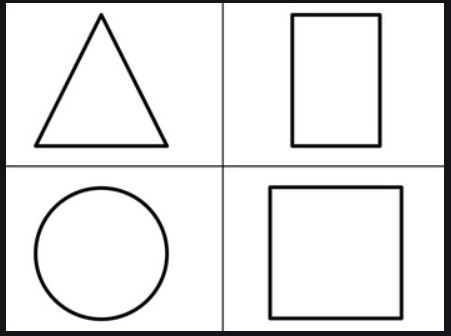
- Cuts out geometric shapes such as square or rectangle, triangle, semicircle, and circle.
- Cuts out simple outlined figures.
5 – 6 years old child;
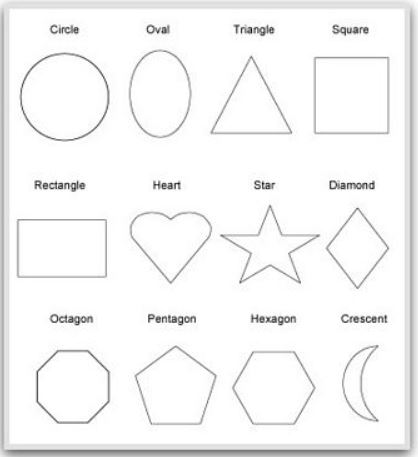
- Cuts out intricate shapes with accuracy
- Cuts out non-paper forms.
Summary
Cutting with scissors is a sophisticated skill. As adults, we take it for granted. Preschoolers need regular cutting activities throughout their education to become proficient with scissor use. Children need to be instructed and supervised when they are learning how to cut with scissors. It is crucial to assess a child’s cutting abilities and present appropriately designed cutting activities. As parents, teachers, and therapists, it is our job to provide positive and motivating learning experiences to our children. Let’s make cutting with scissors fun!
Please read the second part of the article Teaching Scissor Skills to Preschoolers
If you enjoyed this article, please share it with a friend!
References
Case-Smith, J. (2009). Occupational Therapy for Children.
*Kids Groove and Grow is a participant in the Amazon Services LLC Associates Program, as an affiliate advertising program designated to provide means for sites to earn advertising fees by advertising and linking to Amazon.com.

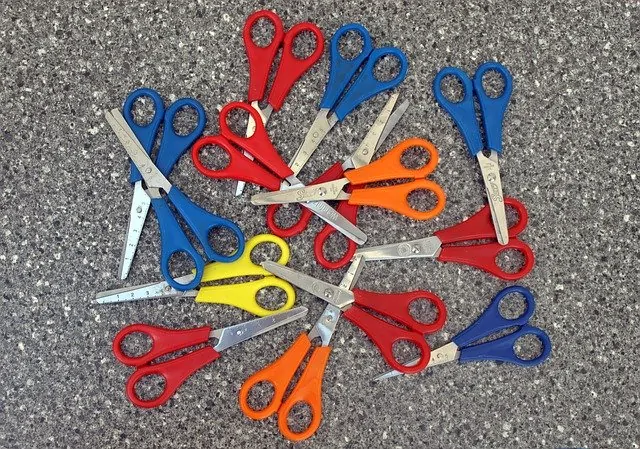

Very informative. Thank you for sharing. We have always had fun cutting Playdough snakes.
Thank you. Yes, cutting play-dough is fun!
Yes! So important! I am amazed and sad at how many kids come to kindergarten each year without scissor skills. Usually because no one at home gave them the opportunity.
Thank you for your comment Jen. Sadly, many parents are afraid to expose their children to scissors. However, there are safe ways to introduce scissors. Yes, cutting with scissors is so valuable!